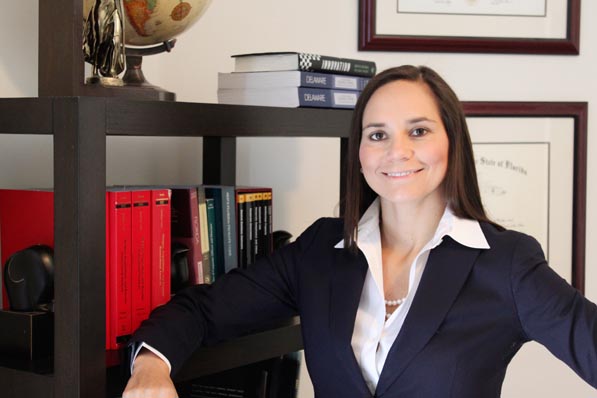From working under the pressure of deportation to coordinating the move of data systems across the Midwest, Miguel Patino shares his journey to becoming Nestlé Nutrition’s associate director of IT.
1982-1992
When Miguel Patino was a child, his father worked for Telmex, a Mexico City-based telecommunications company that provides services throughout Latin America. Sometimes Patino’s school vacations would match up with his father’s work schedule, giving Patino the opportunity to accompany his father on business trips. It was during these trips that Patino’s love for engineering and technology developed. Once in high school, Patino immediately selected science as his specialty, studying electronics and computer engineering, enabling him to get a jump-start on his studies at Mexico’s Universidad de las Américas Puebla. His final exam to obtain his degree required that he implement an electronic control assisted by a computer. “I was very interested in developing control parts,” Patino recalls. “It’s hard to explain, but it was just something that was very interesting and exciting to me.”
1992-1996
After college, Patino was only unemployed for one month before being hired by EPSON México, where the young graduate would quickly move up the ranks. In the United States the company is now mostly known for its printers, but in the early 1990s EPSON developed cutting-edge technology which is used today, including preliminary versions of handheld devices.
In 1994 Patino was one of the few engineers at the company chosen for training to become a NOVELL Certified Network Engineer. Patino had to pass a number of incredibly difficult tests, guaranteeing, as he explains, that you can successfully perform specific tasks. Patino’s certification meant he could architect networks and directory services, set up and configure servers, and support corporate network environments. Shortly after obtaining his certification, Patino was promoted to a managerial position that he stayed in for two years before heading to Kraft Foods, Inc.
1996-2002
Patino’s time at Kraft was his introduction to the food industry, where he remains today. He spent one year with Kraft, helping the company move away from midrange systems, before deciding to leave. “I was working in Mexico City, but living 40 miles away,” Patino says. “I was recently married and we just had our first child—my daughter—and I would leave for work when the baby was sleeping and when I came home, the baby would be sleeping. When Kellogg offered me an opportunity I was so happy because I could live where I worked and I’d have more responsibilities as the NOVELL support across Latin America.”
At Kellogg, Patino was a leader of a team supporting NOVELL systems in several countries, and when his team expanded, he also began supporting North America. His official title was computer architect and, towards the end of his stint with the company, Kellogg acquired the Keebler brand and he was assigned his biggest project yet: coordinating the move of all the company’s enterprise resource planning [ERP] data systems from Battle Creek, Michigan, to Chicago. “There were so many systems and so many things that could go wrong, I knew I had to have a flawless execution,” Patino says. “I developed tactics to be successful, but the financial impact of this move was overwhelming. The food industry spends wisely on IT and there was a lot of pressure for me to get it right.”
2003-2007
When a former colleague from Kellogg joined Gerber Products Company and asked Patino to join the company, Patino jumped at the chance. One year later, he was living in Michigan. A bit of culture shock ensued, but he was confident that he was making a strategic career move. “Honestly, it was a tough move because at this time my family was growing, but I felt it was necessary for the next level in my career,” Patino says. “Moving to the United States opens up opportunities to work on a much larger scale.”
2007-2008
Nestlé purchased the Gerber brand in 2007, putting Patino on shaky ground. Immediately after the acquisition, Patino was selected to integrate Gerber’s system into Nestlé’s world. When the project was completed after a year and a half, he didn’t know if the company would keep him on as an employee. Adding to the stress, Patino’s visa expired. He began working on renewing his green card, but if Nestlé let him go while his green card was being processed he’d have to return to Mexico with his family. “Despite no guarantee of having a job, my team was able to successfully integrate the systems,” Patino says. “On my team, only one person was dismissed. I feel Nestlé recognized us as a resource.”
Today
Ten years ago, Nestlé created a group called GLOBE that is responsible for all of the IS/IT services around the globe, with regional locations called Local GLOBE organizations. As associate director of IT for Nestlé Nutrition, these days Patino is preparing for a career changer: working with the Local GLOBE organization in Glendale, California, where he will spend 15 months as leader on a project to deploy the latest version of Nestlé’s Standard Network Operation Works station, the fifth version of a corporate software system known as SNOW5. “I’m very excited for this assignment and it’s a very proud moment for me,” Patino says. “I’m coming from the acquired company and not only did Nestlé keep me, but they’re also looking at me to undertake this huge project. I’m grateful. I would have never thought I would be able to have these types of opportunities.”

